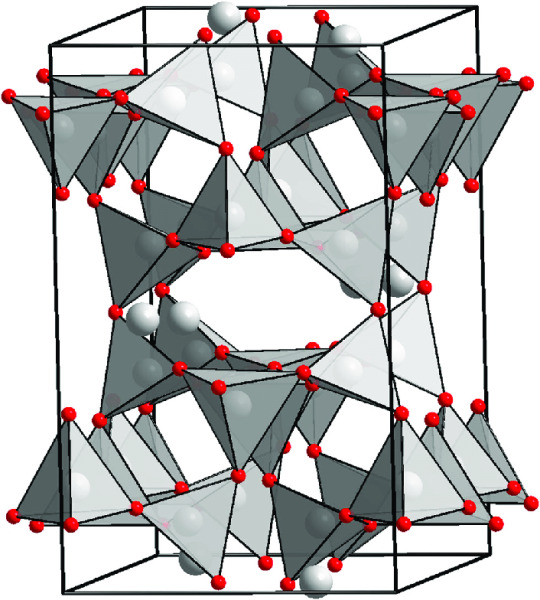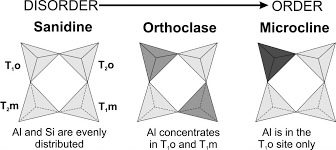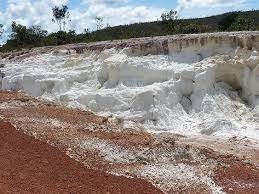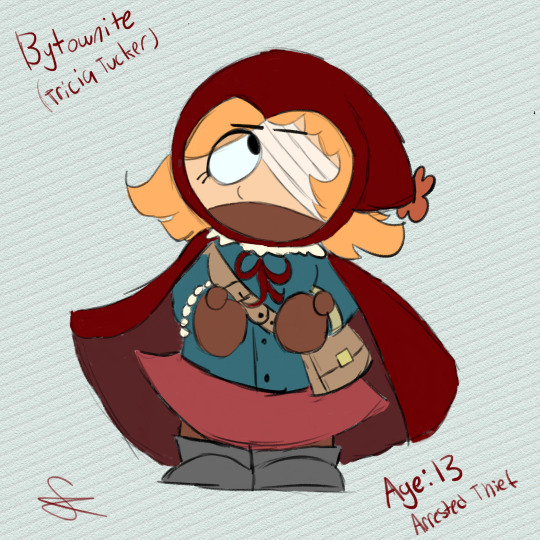#bytownite
Text
SCIENCE SATURDAY!
All month, I have been teaching y'all bits and pieces about the minerals known as feldspars. They are the most common minerals in earth's crust. Today, we are going to learn some of the basic chemistry behind feldspar crystallization and erosion.
FELDSPAR CHEMISTRY
Feldspars are formed as a precipitate as magmas cool. As a result, there are many different kinds. Below is a phase diagram:

Ignore B, all we care about it the colorful triangle. All right, so we have 3 endmembers: Orthoclase (kspar), Albite (sodium plag), and Anorthite (calcium plag). Then, there are all the minerals in between which have different mixed percentages of sodium, calcium and/or potassium. For example, Bytownite is 70-90% calcium and 30-10% sodium. See why there are so many types?
All right, now magma. Magmas cool at different rates for various reasons I really don't want to go into because I am a paleontologist, not an igneous petrologist and that research I don't feel like doing.

Feldspar structure: feldspars have what is called a "crankshaft" structure. We have a bunch of tetrahedrons linked by shared oxygen molecules and we make these fun hexagons.

Now, the basic chemical formula is (X)AlSi3O8. What we are essentially seeing is an Al 3+ substituted in for an Si 4+ causing a charge imbalance because 3 does not equal 4. This requires additional cations (called coupled substitutions).
EXAMPLE: Al 3+ and Na+ or K+ OR 2Al 3+ and 1 Ca 2+
Where is the aluminum? That depends on the temperature of our magma! High temperatures make the position more random while low temps make it more ordered.
If we look at kspar (geologists are lazy and potassium feldspar is a lot to say) we have a K-Al coupled substitution with three polymorphs controlled by temperature and ordering. If we set up a graph where the y-axis is cooling rate and the x-axis is order, we would see the feldspar Sanidine has the lowest order and the fastest cooling and Microcline has the highest order and the slowest cooling while Orthoclase is somewhere in the middle.

Plagioclase has a complete solid solution between the endmembers Albite and Anorthite as I described earlier. Things to note are temperature (once again) plays an important role. Albite forms in low temp magma (800 degrees Celsius) and Anorthite forms in high temp magmas (1100 degrees Celsius). Yes, I know, 800 is a lot but not as mush as 1100 so deal.

They also contain different amounts of silica (SiO2). Albite is 75% silica while Anorthite only has 50%. Anorthite is also the first felspar mineral to crystallize in cooling magma.
HYDROLYSIS
This is the chemical weathering of feldspars into clays such as illite, kaolinite, and smectite.



(That last one overlooks the dinosaur site I work at).
Due to the high temps that feldspars form at, they are not very stable at the surface. Therefore, they weather extraordinarily easily. Hydrolysis happens when water reacts with feldspar minerals (basic or acidic water works best because IONS). The feldspars are dissolved and then produce new ions in solution (K+, Ca2+, Na+).
Here is an example:

And now you know a little bit about the chemistry of feldspars!
35 notes
·
View notes
Text
I’m currently in this Stick of Truth AU! I’ve created an outfit for Tricia who is a thief! Her thief name is Bytownite!

7 notes
·
View notes
Note

Actinolite Nephrite Adamite Aegerine Afghanite Agate Iris Agate Onyx Sardonyx Agrellite Albite Alunite Amblygonite Analcime Anatase Andalusite Chiastolite Andesine Anglesite Anhydrite Annabergite
Antigorite
Bowenite
Apatite
Apophyllite
Aragonite
Arfvedsonite
Astrophyllite
Atacamite
Austinite
Axinite group:
Ferroaxinite
Magnesioaxinite
Manganaxinite
Tinzenite
Azurite
Baryte
Bastnaesite
Bayldonite
Benitoite
Beryl subgroup:
Aquamarine
Bixbite
Emerald
Goshenite
Golden beryl
Heliodor
Morganite
Beryllonite
Beudantite
Biotite
Boleite
Boracite
Bornite
Brazilianite
Bronzite
Brookite
Brucite
Bustamite
Bytownite
Calcite
Manganocalcite
Caledonite
Cancrinite
Vishnevite
Carletonite
Carnallite
Carnelian
Cassiterite
Cavansite
Celestite
Cerussite
Chabazite
Chalcopyrite
Chambersite
Charlesite
Charoite
Childrenite
Chloromelanite
Chondrodite
Chrysoberyl
Alexandrite
Cymophane
Chromite
Chrysocolla
Chrysoprase
Chrysotile
Cinnabar
Citrine
Clinochlore
Clinohumite
Clinozoisite
Clintonite
Cordierite
Iolite
Corundum
Ruby
Sapphire
Padparadscha
Covellite
Creedite
Cryolite
Cuprite
Danburite
Datolite
Diamond
Bort
Diaspore
Diopside
Dioptase
Dolomite
Dravite
Dumortierite
Elbaite
Emerald
Trapiche emerald Enstatite
Bronzite
Hypersthene
Eosphorite
Epidote
Piemontite
Erythrite
Esperite
Ettringite
Euclase
Eudialyte
Fayalite
Ferroaxinite
Feldspar subgroup:
Andesine
Albite
Anorthite
Anorthoclase
Amazonite
Bytownite
Celsian
Labradorite
Microcline
Moonstone
Orthoclase
Sanidine
Sunstone
Fluorapatite
Fluorapophyllite
Fluorite
Forsterite
Gahnite
Pyralspite
Almandine
Pyrope
Spessartine
Ugrandite
Andradite
Demantoid
Melanite
Topazolite
Grossular
Hessonite
Hydrogrossular
Tsavorite
Uvarovite
Almandine-Pyrope
Rhodolite
rock
diamond coal iron reds stone gold
2 notes
·
View notes
Text
The Difference Between Moonstone And Labradorite
Ⅰ. Composition and Mineralogy:
Moonstone is a type of feldspar mineral known as orthoclase, with a chemical composition of potassium aluminum silicate. It belongs to the same mineral family as other feldspar gems like sunstone and amazonite. Labradorite, on the other hand, is a plagioclase feldspar, composed mainly of sodium and calcium aluminum silicate. It is part of the larger feldspar group, which includes stones like spectrolite and bytownite.

Ⅱ. Color and Iridescence:
Both moonstone and labradorite exhibit a captivating play of colors, but their color characteristics differ. Moonstone typically displays a soft blue or white adularescence, a phenomenon caused by light scattering off microscopic layers within the stone. This gives moonstone a gentle glow and a sense of ethereal beauty. Labradorite, on the other hand, showcases a broader spectrum of vibrant colors, including blues, greens, yellows, and oranges. This play of colors, known as labradorescence, is caused by light interacting with fine layers of minerals within the stone.

Ⅲ. Transparency and Clarity:
Moonstone is commonly translucent to semi-transparent, with its adularescence effect visible in these translucent areas. It often possesses a certain degree of clarity, with some stones exhibiting natural inclusions known as "rainbow sheen." Labradorite can range from translucent to opaque, with varying degrees of clarity. Its labradorescence is usually more pronounced in stones with higher transparency.

Ⅳ. Hardness and Durability:
In terms of hardness, moonstone ranks between 6 and 6.5 on the Mohs scale, which makes it relatively delicate compared to other gemstones. Labradorite, with a hardness of 6 to 6.5 as well, shares a similar level of susceptibility to scratches and chipping. Both gemstones require careful handling and protection to prevent damage during daily wear.

Ⅴ. Availability and Origin:
Moonstone can be found in various regions around the world, including Sri Lanka, India, Myanmar, and the United States. It has been used in jewelry for centuries and is relatively accessible. Labradorite is more commonly sourced from locations such as Madagascar, Canada, Finland, and Russia. While it has gained popularity in recent years, labradorite is generally less abundant than moonstone.
In summary, moonstone and labradorite are distinct gemstones with their own unique characteristics. Moonstone exhibits a soft blue or white adularescence, while labradorite displays vibrant colors through labradorescence. Moonstone is typically translucent, while labradorite can range from translucent to opaque. Both gemstones require careful handling due to their moderate hardness. Consider personal preferences and the desired optical effects when choosing between moonstone and labradorite for jewelry or decorative purposes.
1 note
·
View note
Text
Bytownite, a form of miswired quartz found near Ottawa, Canada, is considered to be among the least valuable minerals in the world. Despite its low value, the rock's history and formation are both fascinating.
Bytownite was first discovered in the 1800s near what is now the city of Ottawa, Canada. It was named after the former settlement of Bytown, which is now known as the city of Ottawa.
Bytownite is made up of linked quartz grains with misalignments that sometimes occur naturally due to a variety of geological processes. The misalignment causes the quartz to have a slightly different composition from regular quartz crystal, resulting in faint, smoky coloring not found on regular quartz.
The low value of bytownite is largely due to its lack of durability and use. It is very soft and fragile compared to other types of quartz, making it difficult to work with. Even when polished, it is difficult to see the details of the misalignments that give the rock its distinct appearance. Also, due to its lack of uses, there is not a large demand for it from any industry.
Despite its relative obscurity, bytownite has something to offer for those interested in the mineral and its history. Its formation and appearance have challenged many concepts surrounding traditional geology, and its rarity makes it a valuable object for collectors. Its association with the city of Ottawa, Canada, also makes it a unique part of the city's history and culture.
0 notes
Text
Plagioclase Care Guide
Composition: (Na,Ca)[(Si,Al)AlSi₂]O₈
Hardness: 6-6.5 (scratched by steel nail)
Varieties
Anorthite
Bytownite
Labradorite
Andesine
Oligoclase (sunstone)
Albite
Hydrosensitivity: Unreactive.
Photosensitivity: Unreactive.
Thermosensitivity: Unreactive.
Reactivity: Unreactive.
Fragility: Not fragile.
Toxicity: Not toxic.
Recommended care: Nothing specific.
Conditions are described based on normal use. Sources and definitions below the cut.
Definitions
Composition: Chemical composition
Hardness: Mohs hardness, gauges how tough a crystal is
Varieties: List of varieties a crystal can be.
Hydrosensitivity: Ability to be damaged or altered by exposure to or lack of water. Crystals should never be submerged in water for long regardless of their hydrosensitivity, and salt water can damage crystals no matter what.
Photosensitivity: Ability to be damaged or altered by light, often light with UV rays (sunlight).
Thermosensitivity: Ability to be damaged or altered by heat, often high heat.
Reactivity: Any other notable reactivities.
Fragility: Ease that the crystal breaks or scratches.
Toxicity: Note of anything toxic inherent to the crystal's chemical composition. Not toxic does not mean you should eat it!
Recommended care: The recommended course of action for this crystal.
Other notes: Any other care notes.
Sources
"Plagioclase", MinDat.
"The Care of Minerals", Journal of the Russell Society.
"Solubility Data on 646 Common and Not So Common Minerals", MinDat.
#self post#crystals#crystal care guide#||#crystal#crystal witch#witchcraft#feldspar#plagioclase#sunstone
0 notes
Note
You're 6'8"?! Impressive.
spiritually yes
13 notes
·
View notes
Note
city of meat and welcome to the bathroom theme songs? i need to listen to those. have you uploaded them anywhere?
don’t say i didn’t warn you. they were intentionally made to be bad
1
2
0 notes
Note
yeah i agree about the metal music
Yeah like there's a few songs I've heard that sounded like they were trying WAY too hard to be edgy and it just kinda kills the vibe 😔
Even some of the stuff that has you like "oh wow so edgy~" can be fun but there's a point where you hear something and go, "man this is the best you can do? that's kinda sad :/"
2 notes
·
View notes
Note
it isnt him idk what those people are talking about. unless josh ovalle isnt the original guy who made the meme. idk
ok thank you i knew i wasn’t crazy
1 note
·
View note
Note
they say lack of sleep is probably the cause of alzheimer's.... stay safe
Way to bring down the mood, fam!
45 notes
·
View notes
Note
here I'll give you a better one: Miles Edgeworth
Sexuality Headcanon: gay!
Gender Headcanon: Cravat
A ship I have with said character: Him with Phoenix Wright (narumitsu, wrightworth, edgewright) because im predictable
A BROTP I have with said character: with Dick Gumshoe and Franziska von Karma!
A NOTP I have with said character: him and Franziska. they’re adopted siblings first of all and he’s 7 years older. They met when he was 10 and she was 3, by the time Franziska is introduced in the games he’s 25 and she’s 18 so yeah. big yikes at everyone who ships them
A random headcanon: he’s autistic and his hyperfixation is the Steel Samurai!
General Opinion over said character: i just think he’s neat
#thanks for the ask!#@ everyone else pls send me characters#preferably ace attorney characters but i'll roll with others as well#and i'll give headcanons!#here's the mail it never fails#bytownite
2 notes
·
View notes
Note
🎁/skekSo

send me 🎁and a character and ill describe them using images i already have saved
5 notes
·
View notes
Note
whens your birthday? /date of manufacturing
I was delivered as a gift to this world on December 15th.
3 notes
·
View notes
Text
Bytownite

Metaphysical Properties: Known as Golden Labradorite Stone, Bytownite is an incredibly powerful Solar Plexus stone, associated with everything that supports this energy point. The stone enhances the holder’s vitality, courage, purposefulness, etc. This stone carries the energy of the Sun, making it a great stone for solar witches to work with. Combining this stone with Moonstone can create a wonderful connection and dichotomy that offers an energy that is unified. The stone enhances the holder’s consciousness and allows them to feel more in control and empowered.
Zodiac: *None found, but gives off big Leo energy*
3 notes
·
View notes
Note
Yellow D and Holly Blue

Bytownite
#diegosouzalions2018#steven universe#holly blue agate#yellow diamond#bytownite#fusion#gem fusion#ask#anonymous#gemstone
18 notes
·
View notes